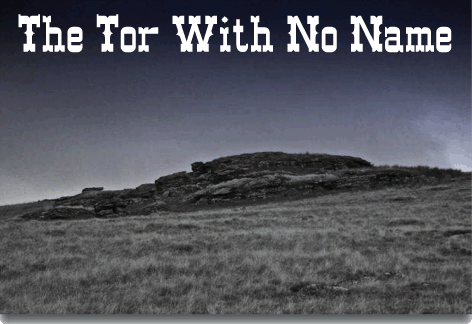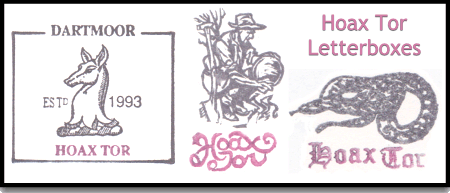
‘The Man With No Name’ – this definitely puts me in the ‘old fart’ bracket with memories of the cigar chomping Clint Eastwood and his exploits which incidentally seem pretty tame by today’s standards. But what about ‘The Tor With No Name‘? Big deal, there are hundreds of unnamed tors on Dartmoor or rather tors whose names have been forgotten. To be exact this particular tor has no name as far as the Ordnance Survey are concerned and is merely an insignificant mark on their maps.
OK, before you think I’ve been at the cider again I will explain where all this is leading. I recently received an email from Dave Martin who is the owner of the Cherrybrook Hotel asking if I had ever heard of Samuel Tor as he was doing some research on it. Well I had come across Billy’s Tor, Benjy Tor, Walter Tor etc. but never Samuel Tor but then again old place-names re-emerge from the mists of time quite often. It appears that a few years ago some guests who were staying at the Cherrybrook had come across a memorial plaque on what they presumed was Samuel Tor and on their return had asked Dave if he knew anything about it. At the time he didn’t but some later research revealed that the plaque was a memorial to a small two year old boy who had sadly died back in 2006 and whose Christian name was Samuel. He had also managed to find a photograph of both the tor and memorial plaque on the ‘Geograph’ website and sent me the links. On seeing the photo the tor looked vaguely familiar which brought back memories of my letterboxing days when the tor was/is know by another name.
If you consult the esteemed William Crossing you will not find any mention of tors in this location but Eric Hemery is a bit more forthcoming. He simply writes: “The apex and south shoulder of the down are marked by outcrops of rocks.”, p.481. In the footnote on the same page he does expound a little more by saying: “the rocks on Broadun are never known as ‘Broadown Tor’ but as Broadun Rocks.”. So in theory we have the original place-name of the group of outcrops on Broadun or Broad Down as the Ordnance Survey likes to call them. Another name for the group of outcrops is Braddon Tor, this being a dialect corruption of Broad Down. Broadun is a typical high moor landscape which Phillpotts aptly describes in his novel ‘The Thief of Virtue’ – “He went up over Broad Down, then turned towards the west and tramped heedless along, for the earth was hard as iron, and might be traversed with safety anywhere save upon the quaking hearts of moss-clad bogs that never froze. Mapped with dry-built walls, ancient broker reaves, tracklines, dykes and boundaries of old-time miners, the white hills exhibited a network of man’s industry stretched over their bosoms.”, p.326.

However, just to complicate things in the usual Dartmoor fashion, around the early 1980s a letterbox was hidden on the tor and it’s clue was something like; “when is a tor not a tor but a hoax?”. Ever since that letterbox was established the tor became known as ‘Hoax Tor’ amongst letterboxers and other moor walkers. As can be seen below, the custom continues with later letterboxes being sited, all of which refer to ‘Hoax Tor’.

This tor is a perfect example of how place-names can evolve and change down through the ages and in some cases due the most strangest of reasons. Here we started with a local name of Braddon Tor and then thanks to the siting of a letterbox the rocks gained the alias of Hoax Tor. Now a memorial plaque was placed there in some circles it has become known as Samuel Tor. Incidentally, it does appear that possibly there was a slight mishap with the inscriptions punctuation, logic would say that it should be Samuel’s Tor? So we start out with a nameless feature on the Ordnance Survey map which to all intents suggests a ‘Tor With No Name‘ and end up with a ‘Tor With Three Names‘, is it any wonder why the folks at the Ordnance Survey are reluctant to name every feature?

Hemery, E. 1983. High Dartmoor. London: Robert Hale Company.
Phillpotts, E. 1910. The Thief of Virtue. New York: John Lane Company
 Legendary Dartmoor The many aspects past and present of Dartmoor
Legendary Dartmoor The many aspects past and present of Dartmoor
